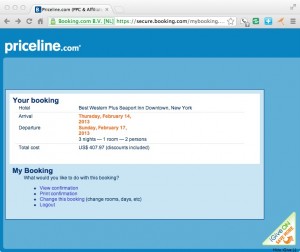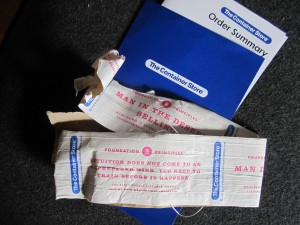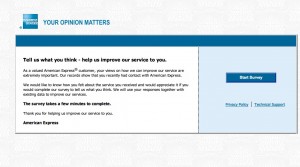If you give a gift, you want to be acknowledged, right? At the very least the recipient should know the package came from you and has a bit of thought behind it. Yet some of the largest mail order retailers are doing a very poor job of dealing with this issue at holiday 2013, long after they should have figured it out.
I’m not that experienced at web giving—I order a lot online, but it’s either for my personal consumption or to be packaged and presented in person. The idea of trusting a mass merchant to honor my earnest attempts to find and deliver the right gift has always made me queasy. And with good reason, it turns out.
I wanted to send somebody two pairs of flannel boxer shorts found on L.L. Bean… a somewhat whimsical yet practical gift. To gift these I would have to spend another $6 per pair of shorts (which on their own cost $16 per pair) and deliver them in two separate gift boxes. I don’t expect to have a live human running around and picking my order in 2013, but I do think it’s reasonable to expect the retailer to anticipate items that might be grouped, like this order, and offer combined packaging. Failing that, give me a substantial discount on gift boxing when I order multiple items sent to the same recipient.
That order abandoned, I went to Eddie Bauer where I found a well-priced duffel bag for the same recipient. Into my shopping bag, appropriate information entered, all the way to checkout, and I realize I’ve never been asked if this is a gift even though it’s to a second ship-to address. I try the chat function and it’s unavailable so I ask for instructions for handling a gift to be sent by email. Several hours later, the only email I’ve received is a notification that I better hurry and complete the order because my item might sell out. I never did find out how to specify a gift message or buy gift wrapping at Eddie Bauer, assuming these services exist.
Amazon, as usual, sets the bar on this. Gift options always available unless it’s clearly specified they are not (as on large items, like snowblowers), and the charges for gift wrap are reasonable. Folks complain about how Amazon is stifling competition but if Bean and Bauer refuse to perform at the same level I don’t think the complaint is justified.
The final element of the gift giving process is, of course, the delivery. Amazon will include a personalized gift greeting, as will my old friend Liberty Orchards which still offers the option of a handwritten gift card at no extra charge. Packages which have the giver’s name printed on the mailing label, and that’s it, are an embarrassment and betrayal of the well-meaning giver’s good intentions. Maybe next year I’ll self-order a bunch of gifts and see what kind of greeting I get. I don’t expect to be overly impressed.



